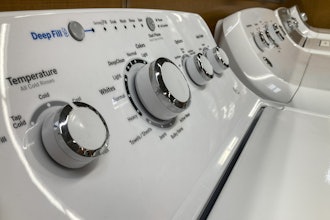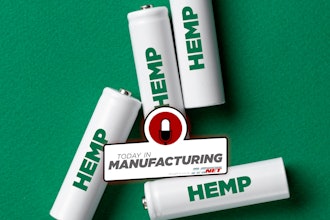Since pipettes are subject to silent and random failures, the most important aspect of pipette quality control is maintaining a calibration frequency that achieves sufficiently high reliability. Here are step-by-step guidelines for you to use.
By George Rodrigues
Many laboratories own more individual pipettes and liquid delivery instruments than any other type of calibrated equipment. Despite — or perhaps because of — this abundance, liquid delivery is one of the most overlooked processes in laboratories, with research indicating that in some laboratories, up to 30 percent of pipettes are malfunctioning at any given moment. Since pipettes produce crucial laboratory data, the implications of malfunctioning liquid delivery instrumentation are grave. One of the most critical aspects to ensuring pipette accuracy and precision is calibration frequency. This article will help you diagnose your pipette population and determine a schedule that meets your laboratory's requirements.
Understanding Failures
Mechanical action pipettes, unlike the original glass pipette, contain many internal parts. Some pipette failures are evident, either visually or by the feel of the pipette action. In these instances, the operator is aware that the pipette is not operating correctly. However, when the internal mechanism of a pipette fails and it is not obvious to the operator, a silent failure has occurred. For example, a corroded piston or leaking seal might cause a pipette to deliver incorrectly — sometimes by a wide margin — and this usually goes undetected by the operator.Figure A shows data taken at a major biomedical research institution. Fifty-three adjustable 2-20 µL pipettes, then in service, were tested at 5 µL. Each point on the chart represents a pipette checked by a trained operator using 10 data points. Although the pipettes were in routine daily use, a number of them failed and were performing outside the laboratory's established tolerances. In each case, the operators were unaware that silent failures had occurred and continued to use the pipettes in critical research and manufacturing processes.Pipette failure is considered random when due to accidents, misuse, or other unpredictable events. For example, an operator may accidentally draw liquid into the body of the pipette, causing piston corrosion or premature seal wear. Random failures cannot be prevented by infrequently scheduled maintenance. Random or unpredictable failures typically represent at least 90 percent of all pipette failures. In contrast, predictable (hence preventable) failures are those that arise from normal wear, which are dependent on factors such as frequency of use and time since last maintenance. Predictable failures represent 10 percent or less of all pipette failures.
Frequency Question
Several factors must be evaluated to determine a suitable calibration frequency for a laboratory's pipette population. These include mean time before failure, target reliability levels, quality control principles, and regulations. Let's review each below.Mean Time Before Failure: The average rate at which failures occur can be expressed as mean time before failure or MTBF. To determine MTBF, a group of pipettes is tracked to determine how long it takes each pipette to fail. A failure is defined as performance that falls outside the laboratory's established tolerances. The mean of all the failure times is the MTBF for that specific group of pipettes. Once MTBF is determined, one can predict how long a pipette can be expected to maintain accuracy and precision. The MTBF for individual pipettes can vary significantly, depending on a number of factors, as Figure B indicates.
Figure C: Calibration frequency for pipettes based on target reliability level and estimated MTBF
(click image for larger version)
Frequently Asked Questions If I am running controls, why do I need to be concerned about checking my pipettes?A: Controls provide an important check on laboratory results but cannot guarantee that all sample results are correct. A failed control only indicates a problem at the end of the testing process. Most laboratories, however, realize that it is both less expensive and more reliable to build quality into a laboratory result up-front, rather than to discover problems later. If I perform regular preventive maintenance on my pipettes, do I need to worry about calibration? A: Yes. Pipette failures can happen silently at any time during your maintenance interval. Because failure can occur immediately after accidents or misuse, preventive maintenance cannot adequately protect against these random sources of failure. Preventive maintenance can only prevent predictable failures. However, random (i.e., unpredictable) failures are best detected by the laboratory's established pipette calibration protocols. Effective protocols combined with appropriate preventive maintenance represent the best way to ensure pipette performance. I use the "tip drip test," aspirating liquid into my pipette tip and observing whether any liquid drips out. Is this as sufficient a check as calibration? A: In a high-volume pipette, the tip drip test will sometimes indicate a seriously leaking seal. Unfortunately, with low-volume pipettes, surface forces prevent liquid from dripping out of the tip, even when seal leakage is very severe. Even with high-volume pipettes, a tip drip test may not uncover other problems such as intermittent leakage. These failures are best detected during calibration to determine precision and accuracy. |
Regulations: In order to build quality into laboratory results, the instruments used in the process must be in good condition and properly calibrated. Regulations and standards published by organizations such as ISO, the FDA, and ASTM International provide minimum requirements that help ensure the quality of laboratory results. These form the groundwork upon which a laboratory should establish the frequency of pipette calibration as part of good quality control practices. Regulations specify that all laboratory instruments used in production, including pipettes, be regularly calibrated at an appropriate frequency. This frequency should be related to the amount and criticality of pipette use and the laboratory's MTBF experience.
Technology Options
Several calibration technologies are available to laboratories. Frequent calibration is aided by choosing a technology that is reliable and easy to use. Let's review three options below.1. Gravimetry is one calibration technology option, measuring liquid weight on analytical balances. This method, however, can impede frequent calibration because calculations can be time-consuming and tedious, especially with multi-channel instruments. Gravimetry also requires a controlled environment for proper function because it is impacted by evaporation, static electricity, and vibration, especially when measuring small volumes.
2. Single-dye photometric calibration measures light absorbance by a dye solution at a given wavelength to verify liquid volume. This technology is less affected by the environment and evaporation issues, giving photometry a distinct advantage at lower volumes.
3. Ratiometric photometry is another approach to calibration. This patented technology relies on two dyes for more accurate and precise volume measurement and is especially applicable to low-volume measurement.
George Rodrigues, Ph.D., is the senior scientific manager at Artel, Westbrook, ME, a leading innovator in liquid delivery quality assurance. He can be contacted at 207-854-0860 or [email protected]. More information is available at www.artel-usa.com.




















